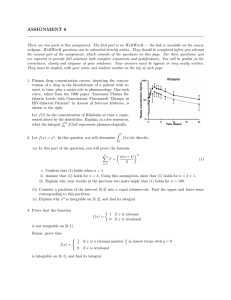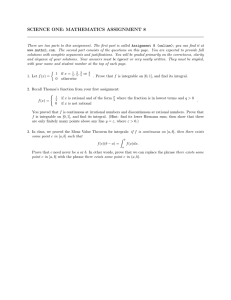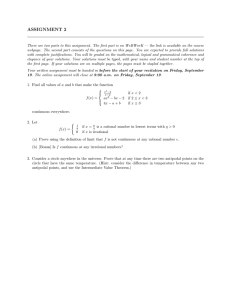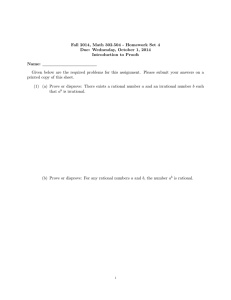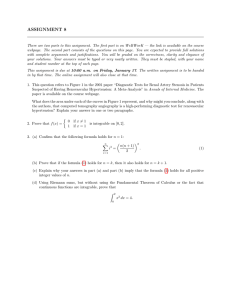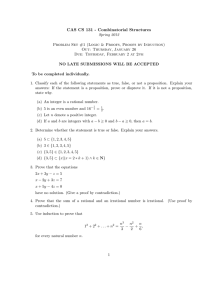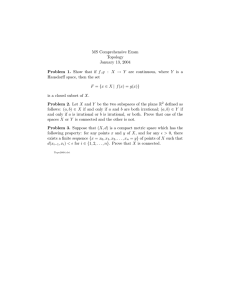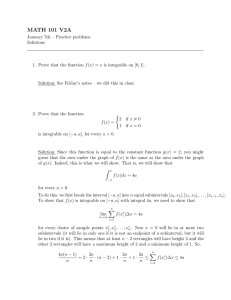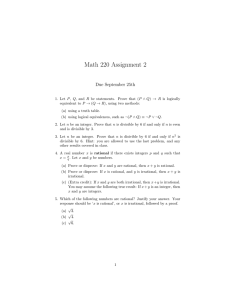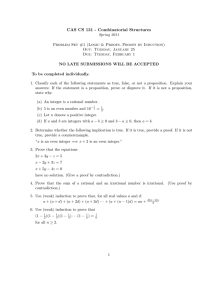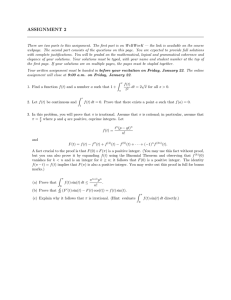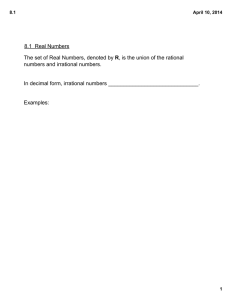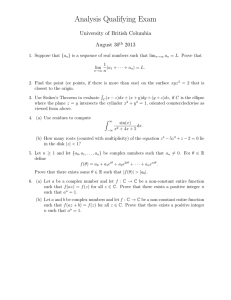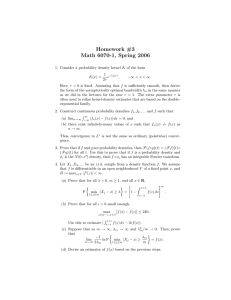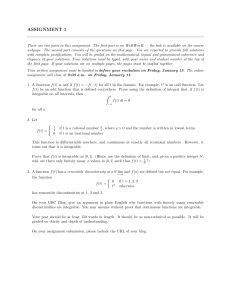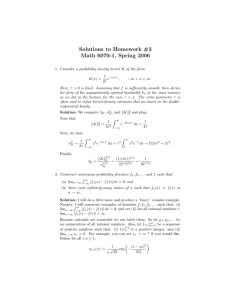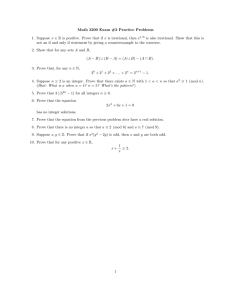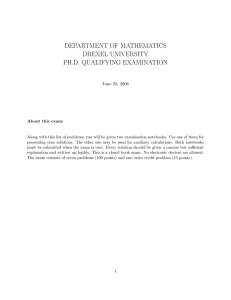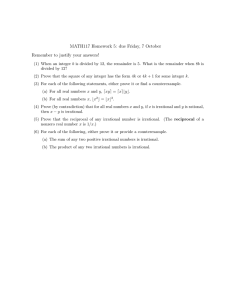ASSIGNMENT 1
advertisement
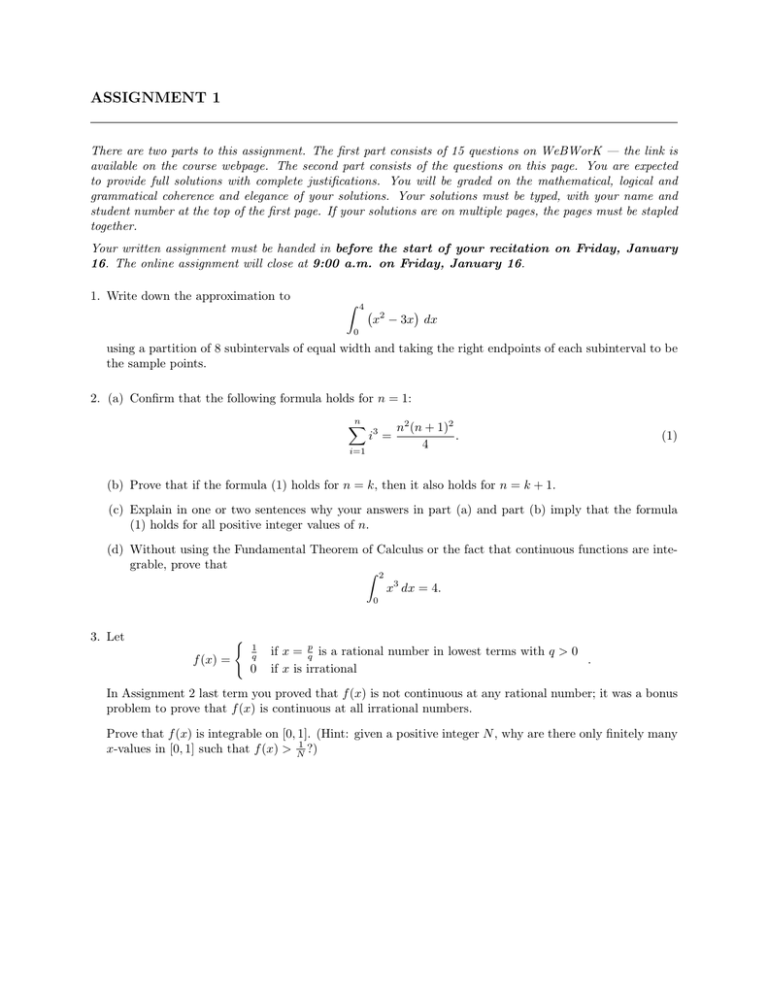
ASSIGNMENT 1 There are two parts to this assignment. The first part consists of 15 questions on WeBWorK — the link is available on the course webpage. The second part consists of the questions on this page. You are expected to provide full solutions with complete justifications. You will be graded on the mathematical, logical and grammatical coherence and elegance of your solutions. Your solutions must be typed, with your name and student number at the top of the first page. If your solutions are on multiple pages, the pages must be stapled together. Your written assignment must be handed in before the start of your recitation on Friday, January 16. The online assignment will close at 9:00 a.m. on Friday, January 16. 1. Write down the approximation to Z 4 x2 − 3x dx 0 using a partition of 8 subintervals of equal width and taking the right endpoints of each subinterval to be the sample points. 2. (a) Confirm that the following formula holds for n = 1: n X i3 = i=1 n2 (n + 1)2 . 4 (1) (b) Prove that if the formula (1) holds for n = k, then it also holds for n = k + 1. (c) Explain in one or two sentences why your answers in part (a) and part (b) imply that the formula (1) holds for all positive integer values of n. (d) Without using the Fundamental Theorem of Calculus or the fact that continuous functions are integrable, prove that Z 2 x3 dx = 4. 0 3. Let ( f (x) = 1 q 0 if x = pq is a rational number in lowest terms with q > 0 . if x is irrational In Assignment 2 last term you proved that f (x) is not continuous at any rational number; it was a bonus problem to prove that f (x) is continuous at all irrational numbers. Prove that f (x) is integrable on [0, 1]. (Hint: given a positive integer N , why are there only finitely many x-values in [0, 1] such that f (x) > N1 ?)
